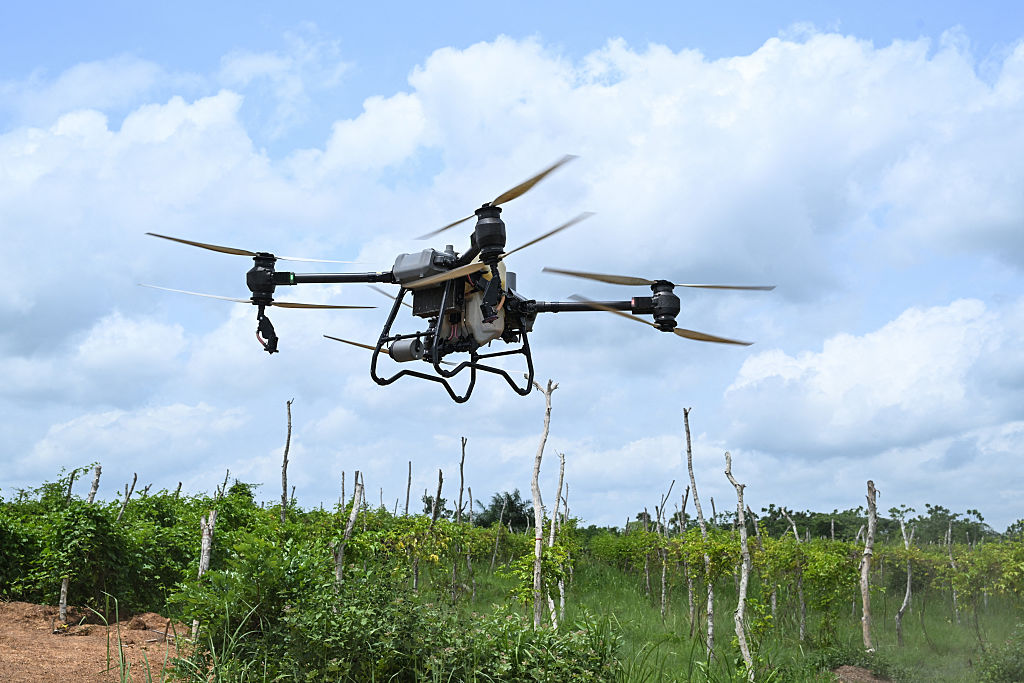Ethiopia and Nigeria are joining forces to develop a fleet of African-made drones capable of both civilian and military applications.
In recent weeks, Ethiopian officials hosted members of the Nigerian Air Force on tours of Ethiopia’s aircraft manufacturing and maintenance facilities. Nigeria has promised the Ethiopians a reciprocal visit focused on Nigeria’s military training institutions.
The visits are the latest step toward increasing the number of indigenous African unmanned aerial vehicles (UAV) in a market flooded by technology imported from China, Iran and Turkey.
The collaboration is part of a broader demand — voiced repeatedly at this year’s Africa Chiefs of Defense Conference in Nairobi, Kenya — that African nations develop their own defense industry to compete globally and to reduce the reliance on other countries.
Nigeria has established itself as a hub for drone manufacturing. The country’s first drone, the Tsaigumi UAV, was released in 2018 for intelligence, surveillance, and reconnaissance. Nigeria has more recently developed a kamikaze drone known as the Damisa in partnership with Nigerian technology company Briech UAS. Africa’s largest drone factory, TerraHaptix, has the capacity to produce 10,000 drones a year in Nigeria’s capital, Abuja.
Ethiopia inaugurated state-run SkyWin Aeronautics Industries in March to begin manufacturing drones at a factory in Addis Ababa. Ethiopian Prime Minister Abiy Ahmed described his nation’s new drone capabilities as “unimaginable just a few years ago.”
“Our ability to produce drones with diverse capabilities — designed and built by our own young professionals — is a significant milestone,” Abiy wrote on his X account.
Ethiopia used a variety of imported drones in its war against rebels in the Tigray region in 2022. Since then, drones have become a key component of Ethiopia’s strategy for dealing with other rebellions in the Amhara and Oromia regions.
Egypt, Kenya, South Africa and Sudan are also producing their own drones. Morocco established a factory in 2024 to assemble Israeli WanderB and ThunderB drones. Morocco has used those UAVs for reconnaissance, intelligence and target acquisition missions.
Drones have become a vital part of operations for both government forces and insurgent groups across the continent in recent years. Throughout the Sahel, both sides used drones for both intelligence-gathering and aerial attacks. Drones have figured prominently in rebel attacks on government forces in Mali. Nigeria deploys drones along its northern border to track the movements of Boko Haram and Islamic State West Africa Province even as both groups use their own drones to watch Nigerian troops.
Both sides have also deployed drones in the Sudan civil war, most notably in May when the Rapid Support Forces launched multiple kamikaze drones against the Sudan Armed Forces’ wartime capital of Port Sudan.
By pooling their resources, two of the continent’s most experienced drone makers and users can develop a homegrown solution to African nations’ demand for drone technology, according to analysts Ekene Lionel and Patrick Kenyette. They may also inspire other African nations to develop similar joint ventures.
“This partnership carries implications far beyond the immediate goal of UAV co-production,” Lionel and Kenyette wrote recently for Military Africa. “It represents a model of how African nations can address shared challenges through cooperation, leveraging their strengths to achieve collective progress.”

